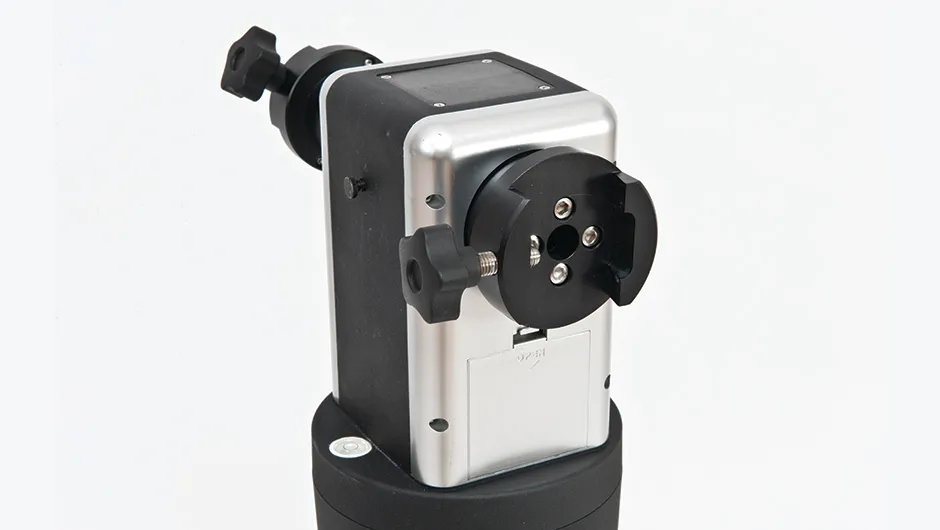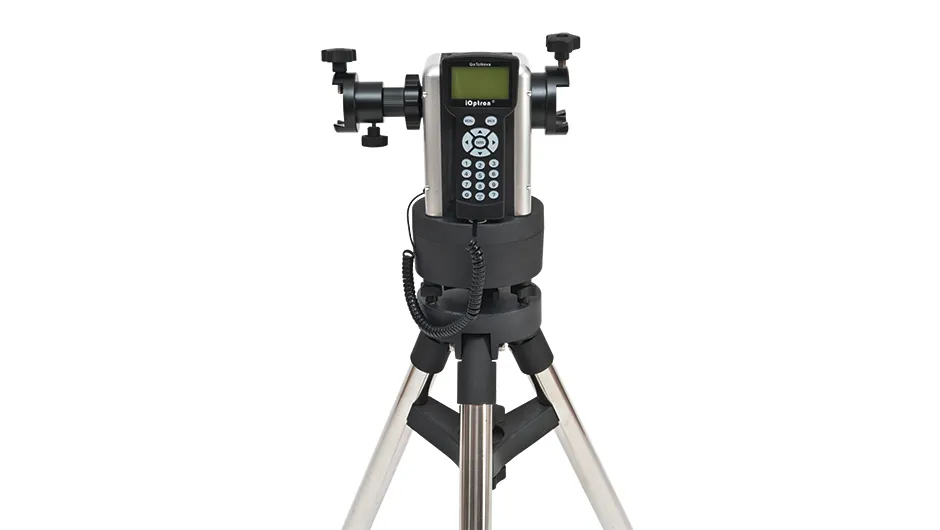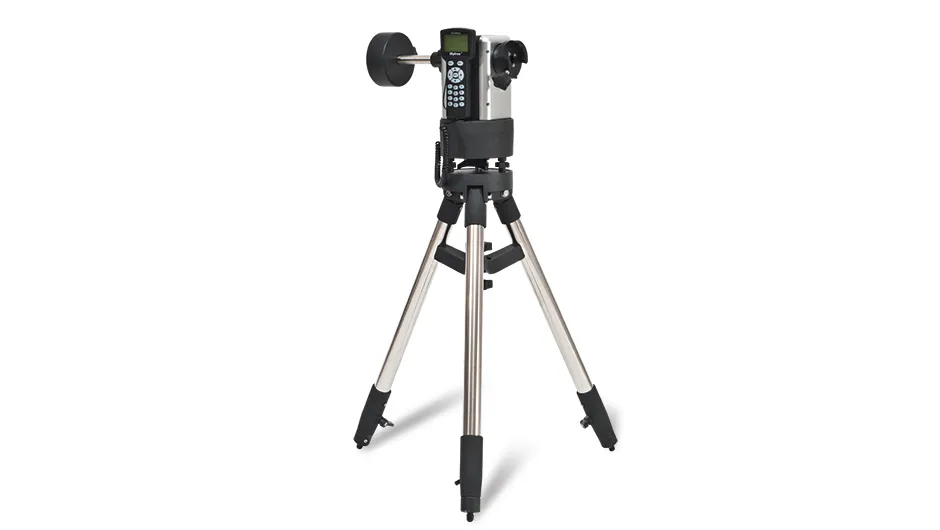Price: £799.00
Weight: 10.1kg
Supplier: Altair Astro
Telephone: 01263 731505
Website: www.altairastro.com
The Minitower II is an enhanced version of the Minitower I, with more accurate encoders and a more powerful motor drive system, which enables it to handle slightly heavier telescopes with more accuracy.
We tested it with a 3-inch, f/11 refractor with a heavy tube clamp and finder, attached using a standard Vixen-type dovetail bar.
This setup weighed almost 6kg, nearly half of the mount’s maximum quoted payload.
We also made use of the mount’s extending counterbalance shaft and 5kg counterweight.

We were very impressed with the construction of this mount; it would be capable of carrying the full load either as a single large scope or a pair, using the secondary dovetail holder provided.
For our tests we used the supplied AC adaptor and power cable rather than the battery option.
We experienced no issues with cable wrapping, but we may just have been lucky with our choice of targets.
The mount is shipped in two boxes: one containing the heavy-duty tripod and a small counterweight, the other containing the head with all the cables and accessories inside a sturdy, foam-lined flight case, which protects the contents very well.
The printed quick-start guide explains how to assemble the mount and set up the controller, but you need to download the full manual from the internet – you may need it if, for example, you need help with alignment procedures.

That said, with a little prior experience of Go-To mounts, we discovered that the onscreen menus and prompts from the controller were all we needed to get the mount slewing accurately.
The tripod has 38mm-diameter stainless steel legs with substantial metal clamps.
Fully extended, the altitude shaft is 135cm, and even at this height the whole system remains stable and vibrations are quickly dampened.
The azimuth clutch lock and washer need to be screwed into place before the mount can be attached, as do three levelling screws on the top of the tripod.
These screws make short work of setting up the head, aided by an integral spirit level.
Once levelled, you need to turn the mount so that a moulded mark faces south, then point the scope vertically upwards and lock the clutches – now set up can commence.
A GPS sensor built into the top of the mount’s alloy casing detects your location.
On the first evening of testing this seemed to take quite a long time – in fact, we resorted to manually entering our coordinates.
On subsequent evenings our position was established in about 40 seconds.
One-, two- and three-star alignment procedures are available.
We tried them all, and found that we could achieve very successful results even with one-star alignment, especially when we used the ‘sync to target’ option for the first couple of objects we viewed.
The controller has a dimmable, red backlit screen and buttons, and it’s easy to navigate the menus, which include: planets, the Sun and the Moon; deep sky; stars; and comets.
We found it easy to select from the database as its 130,000 objects are grouped by catalogue numbers as well as common names.
When we chose an object below the horizon, the Minitower II helpfully told us what time it was due to rise.

Unlike some controllers there are no built-in tours, so you need to plan your own viewing schedule.
However, as it can be paired with many common planetarium applications you can do some preparation before heading out into the cold!
This is an excellent altaz mount; robustly made, with good features and user-friendly controls.
It sits well in between the iOptron Cube PRO (5.5kg payload, £399) and the iOptron Minitower Pro (15kg payload, £1,049).
There is provision for electric focusers as well as autoguiding, and it’s clear that it provides plenty of room for development and experimentation as your demands and equipment change over the years.
A version of this article appeared in the June 2012 issue of Sky at Night Magazine